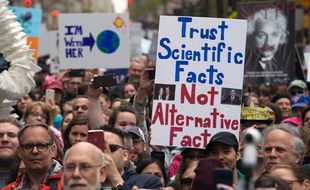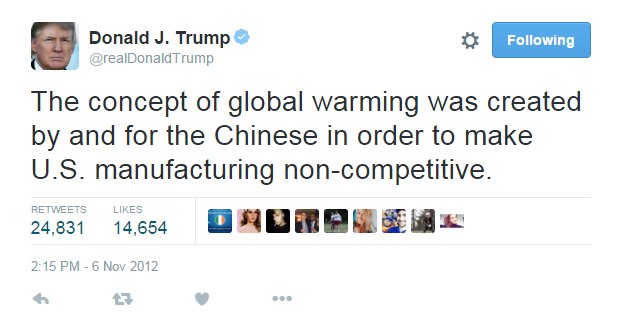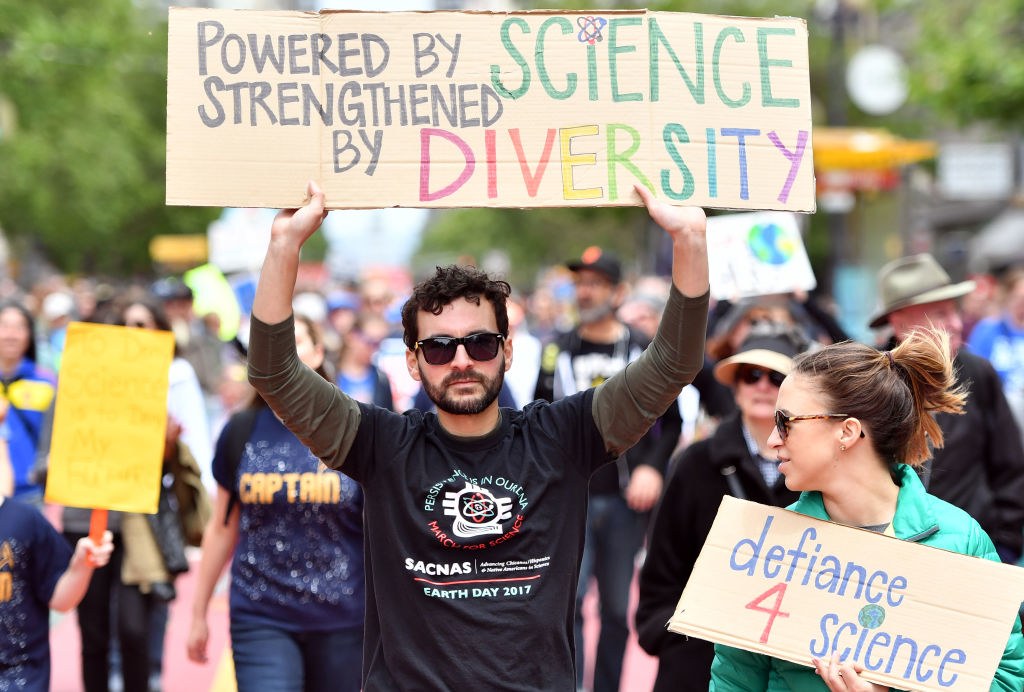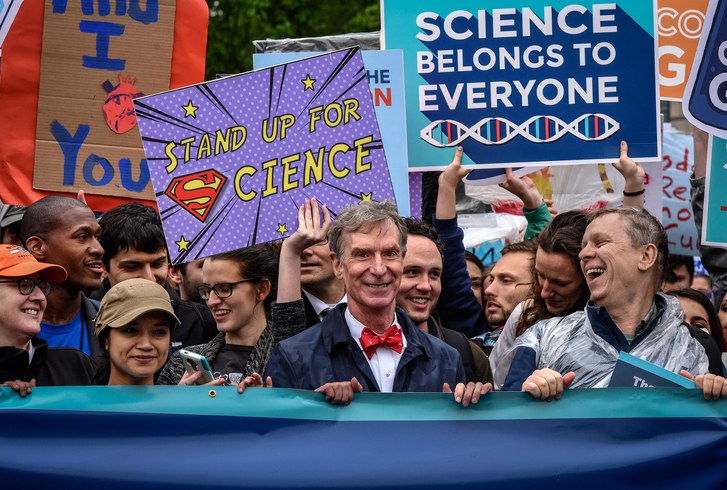The March for Science promotes the integration of science into society with focuses on evidence-driven decision-making and the accessibility of science to the populace. Created in direct response to the dramatic rise of science denial around the world, this movement aims to counter "alternative facts" by informing the public with unbiased, reproducible, and truthful data. Furthermore, the continual defunding of research institutes like the National Institute of Health in the USA fuels the March for Science Movement to demand increased employment and integration of holistic and impartial science in policymaking and administrations.
The importance of the March for Science can clearly be seen in its numerous connections with other contemporary social movements. From other science-related movements like the Movement against Anti-Vaccinations and the Movements for Universal Healthcare and the People's Climate Movement to highly politicized directives like the Movement for Gun Control and the Movement to Legalize Cannabis, evidence-supported scientific practices are critical for progress in almost every contemporary political conflict. The March for Science is a crucial turning point for the conduct of modern society.
https://www.marchforscience.com/what-we-do
This photo was taken by CNN in Washington D.C. at the first March for Science on April 22, 2017. The protest sign seen clearly outlines the need to follow evidence-based science rather than falsified "alternative facts." https://www.cnn.com/2017/04/22/health/global-march-for-science/index.html
The March for Science aims to better connect science with society. This objective manifests itself in a plethora of ways. From removing partisanship in science and the biased use of scientific evidence in policy to amending the aloofness of science from everyday society, the March for Science aims to change the culture around science as a supplement but rather an integral aspect of life.
Explicitly, the March for Science supports science advocacy, outreach, and education in order to break down barriers between the public and science, build trust through discussions and not lectures, communicate the vitality of scientific research, make science accessible to all members of society, and make everyone advocates for science. Furthermore, the movement emphasizes the values of being evidence-driven, inclusive, nonpartisan, transformative, adaptive, and truth-driven--which is how science should be.
https://www.marchforscience.com/our-mission
http://annals.org.proxy.lib.duke.edu/aim/fullarticle/2620158/alternative...
This photo, taken directly by the March for Science, captures the desire to remove partisanship from evidence-based science. https://www.thrillist.com/lifestyle/new-york/march-for-science-nyc-2018
Political parties, PACs, biased news agencies, fake news, and "alternative facts"
Science has historically always come under fire when its evidence-supported ideas have contradicted social norms--Copernicus was attacked for his heliocentric model of the universe, Darwin was disregarded because of his theory of evolution by natural selection, and presently climate change has come under fire as a "hoax." Contemporary politics that have questioned the validity of science is not a new development but rather a continuation of centuries of history. The March for Science intends to change this dynamic of science and society, establishing science's place as an informant of all aspects of civilization. Science (from the stringent efforts of the scientific method to establish reproducible and valid data) should be implemented rather than first debated if it is true or not by uninformed parties.
Furthermore, the hijacking of science for the gain of political parties has always existed with politicians selectively highlighting the data they want in order to further their own agendas. This has to end. Science should be utilized holistically and in pursuit of the truth for the betterment of all society--not for the one or the few--and so it must be de-politicized.
http://annals.org.proxy.lib.duke.edu/aim/fullarticle/2620158/alternative...
The above political cartoon was drawn by Adam Zyglis and demonstrates the continual denial of scientific fact by sectors of the public throughout history. Science has perpetually faced opposition when first postulated. https://www.pinterest.com/pin/273593746089616455
Originally conceived on January 24th, 2017 (four days after the inauguration of President Donald Trump), the first March for Science was held on Earth Day (April 22nd) 2017. The movement began as a rebuttal to the Trump Administration's proposed budget that consisted of significant cuts to scientific research in departments like the NIH and EPA as well as actions taken to suspend ongoing research in subjects like fossil fuels and climate change. Furthermore, the continual dismissal of truth and the propagation of "fake news" throughout the 2016 American Presidential Election by certain candidates gave credence to why the March for Science and its support of evidence and truth-finding needed to happen.
Entering into its second year, the March for Science continues to expand and hopes to reach even more members in societies all around the world, paving the way for increased empiricism and accuracy in the modern age. The March for Science is just getting started...
http://annals.org.proxy.lib.duke.edu/aim/fullarticle/2620159/march-science
http://annals.org.proxy.lib.duke.edu/aim/fullarticle/2620158/alternative...
The above photo is a screenshot of a tweet by President Trump in 2012 (four years before his presidential campaign) that clearly outlines his stance on climate change. http://www.politifact.com/truth-o-meter/statements/2016/jun/03/hillary-c...
The March for Science embodies several key ideologies like feminism and egalitarianism and anti-racism. In order to incorporate as many members of society in support of science, the movement seeks to support women in STEM as well as representation and involvement of people from all walks of life equally in science. While these ideologies are central to the March for Science and its directives, they have by no means been fully realized yet as representation in science careers is still lopsided; the movement hopes that their efforts will correct this misrepresentation for future generations, making science open for all people completely and equally.
This is a photo of Raul Tores at the San Francisco March for Science; Tores is a member of Advancing Chicano/Hispanic & Native Americans in science (SACNAS). His sign emphasizes the need for diversity in science as well as representation in scientific bodies. https://diversity.ucsf.edu/community/sci-march
In order for this movement to be as bottom-up as possible, the March for Science heavily emphasizes organization at the local level. An higher "overall" March for Science panel exists in order to standardize the movement's goals and direction, but each march in cities around the world is able to organize when, where, and how they see fit within the model of the movement.
The March for Science features several staff members overseen by a board with both constituted heavily by women scientists (a part of the movement's initiative to give underrepresented populations a voice in the sciences). Furthermore, many of the board and staff members represent minority peoples of color, making the March for Science and multi-faceted representation of as many parts of society as possible.
In regards to the marchers themselves, a cross-section of the scientific community is involved. From older and younger scientists alike, many people feel inspired to be engaged in the March for Science as the climate of their respective fields comes under pressure from governments and societies around the world. That being said, while the scientists represented is a cross-section of scientists, that does not necessarily mean they are a microcosm of society as a whole; gender and person-of-color disparities across scientific disciplines still prevail and is one of the hot-button topics the March for Science hopes to address.
https://www.marchforscience.com/who-we-are
This photo of science personality Bill Nye was taken by Bill O'Leary at the front of the D.C. March for Science procession. Nye has been a longtime supporter of science education. https://www.newyorker.com/tech/elements/the-usefulness-of-a-march-for-sc...
Ongoing March for Science campaigns:
-Support Gun Violence Research: Following the tragedy of the Parkland shooting in February 2018, an open letter was written and signed with the intention of repealing the Dickey amendment on funding gun violence research. Congress recently clarified that the Dickey amendment does not ban gun violence research, but more work is still needed in researching the gun violence epidemic.
-Put the "Science" back in Science: An ongoing petition sent to Congress every time new officials are appointed, this campaign persists in order to bring scientists into conversations surrounding science-related policy--to put the "science" back into science.
Primarily, the March for Science utilizes social media to communicate actions taken by the movement as well as news about the marches themselves. This allows information to be disseminated in a quick and easy manner to a wide number of people interested in marches from locations all around the nation and world. The March for Science also uses mass communication via news conferences and press releases to inform the public at large of the movement's goals and practices. Furthermore, their extensive website serves to provide as much information as possible about each and every facet of the March for Science from those involved in its leadership and direction to the countless satellite marches being conducted around the world.
https://www.marchforscience.com/contact
This is a screenshot of the March for Science-Norway website, demonstrating the international level the movement has expanded to with marches occurring annually around the world. http://marchforsciencenorway.com/index_e.html
The "Dial-a-Scientist" program was made in order to create substantial channels of communication between scientists and the public. People can contact scientists in a wide selection of fields with question regarding the truth and pertinent information whether they would just like to know more about it or if they would like to present this knowledge to a larger group via a discussion format--promoting active engagement of the public in science-learning. This space serves as an arena to bridge the rift that has formed between science and society, connecting the uninformed with the informed in order to better-inform decisions and people's lives.














